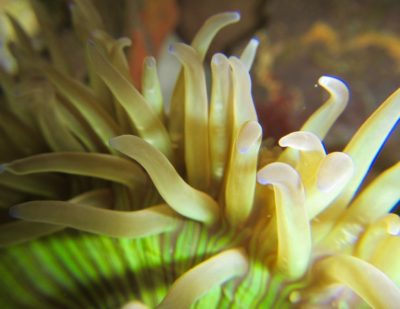
Deep beneath the sea, things are moving, changing, shaping, and forming. What a world to live in! Just like land formations on the continents, the sea floor also experiences shifts and breaks in the Earth’s crust, making underwater formations such as ridges and underwater volcanoes. One of the results of this movement of magma is referred to as a seamount, or a rising landmass underneath the sea. It is considered a seamount and not an island because it has yet to break the surface. Usually forming from extinct volcanoes, these land features underneath the water’s surface can form quickly over a geological timeline and will eventually break the surface.
 So Seamounts, what’s the big deal?
So Seamounts, what’s the big deal?
![]()
In much the same way an oasis in the desert offers habitat for a wide variety of species, underwater seamounts offer open ocean creatures plentiful food and shelter! Scientists consider seamounts biological hotspots, as nutrient rich waters from the deep rise up and circulate around these underwater land features to allow for the mass growth of the ocean’s primary producers, phytoplankton. This in turn draws many large species from the open ocean including fish, whales and sharks. Sometimes, even our feathered friends join in on the feast as birds travel hundreds of miles to benefit from these underwater oases! In addition, these habitats can sustain many varieties of corals and crustaceans. Once thought to be nothing more than a boating hazard, seamounts are now appreciated for the biological diversity that they sustain!
 Most seamounts form from underwater volcanic activity. This is a fairly common occurrence, and indeed one of the most beloved vacation spots on Earth is a perfect example of this underwater volcanic activity, having formed this famous tropical chain. Yep, the Hawaiian Islands are categorized as a series of seamounts that have been rising out of the water for about 5 million years! This archipelago was formed and continues to form due to the shifting Pacific Plate over a molten magma hot spot that spews out of the Earth’s crust deep below the surface. The Pacific Plate has a Northwestwardly movement, approximately 3 inches a year, which accounts for the linear shape of the chain. This movement also explains the age of each island, Kauai being the oldest as it is the furthest in the northwestwardly movement, making the big island of Hawaii the youngest and most volcanically active in the chain.
Most seamounts form from underwater volcanic activity. This is a fairly common occurrence, and indeed one of the most beloved vacation spots on Earth is a perfect example of this underwater volcanic activity, having formed this famous tropical chain. Yep, the Hawaiian Islands are categorized as a series of seamounts that have been rising out of the water for about 5 million years! This archipelago was formed and continues to form due to the shifting Pacific Plate over a molten magma hot spot that spews out of the Earth’s crust deep below the surface. The Pacific Plate has a Northwestwardly movement, approximately 3 inches a year, which accounts for the linear shape of the chain. This movement also explains the age of each island, Kauai being the oldest as it is the furthest in the northwestwardly movement, making the big island of Hawaii the youngest and most volcanically active in the chain.
The good news for all you vacation lovers? This famous seamount chain isn’t done forming quite yet…about 20 miles to the southeast of the big island, underwater volcanic activity is pushing up another new seamount known as Loihi. But, don’t pack your Hawaiian shirts and snorkel gear just yet…this seamount won’t break the surface for at least another 10,000 years. I know, sometimes geologic timescales can be a mega bummer.


